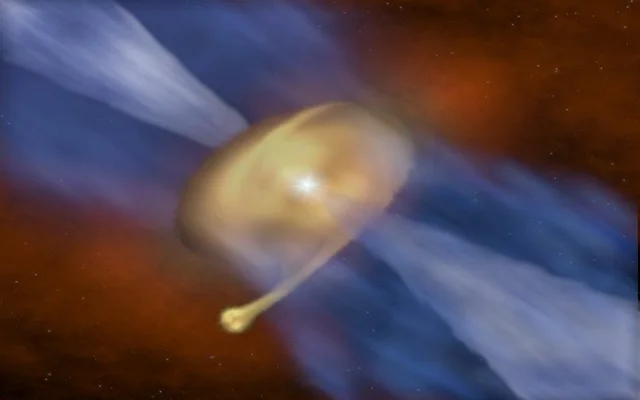4:08 PM A young star got caught on compilation as a planet | |
Astrologers have captured time of the most thorough forms of the young starry sky made for this day, and have noticed a sudden satellite in an orbit around it. Following the young star, astrologers led by John or from the Lida Institute noticed that in fact it is not 1 star, but two. The main object, called MM 1a, is considered a young powerful star, surrounded by a rotating disk of gas and dust, which was at the center of the initial study of scientists. Powerless object, MM 1b, was seen immediately behind the disk in orbit around MM 1a. The team believes the fact that this is the time of the first examples of a "fragmented" disk found around a bulky young starry sky. "The starry sky is formed in huge clouds of gas and dust in interstellar space," ili said. "When these clouds drift under the influence of gravity, they begin to spin rather, forming a disk around themselves. In the starry sky of low mass, these as our Sun, just in these disks have all chances to create planets. In this case the star and the disk that we watched, so massive in fact that instead of this, in order to follow the planet formed in the disk, we we see the birth of another star in the sky." By measuring the amount of radiation emitted by dust, and graceful shifts in the frequency of light emitted by the gas, the scientists were able to calculate the mass mm 1A and MM 1B. Their work, posted now for a year, found mm 1A weighs in at 40 one over the mass of our Sun. The smallest orbital star MM 1b weighed less than fifty percent of the mass of our Sun. "Almost more and more dilapidated powerful starry sky found with adjacent satellites," - said or. "But the double starry sky is often quite equal in mass, and as a consequence, probably formed together as brothers and sisters. Finding a young binary system with a global 80: 1 correspondence is quite unusual and implies a completely different process of formation for both objects." The process promotes the formation of MM 1B happens in distant habitats, cool, powerful discs. These "gravitationally unbalanced" discs are unable to hold back from the attraction of personal gravity, breaking up into one—or several—fragments. "I have spent a great deal of my career modeling this process to form large planets around the starry sky, like our Sun. In fact, it is really interesting to see how it will form something as tremendous as a star, " said Duncan Forgan, co-author of the center for exoplanet science at the St. Andrews Institute. Scientists that, actually not long ago revealed a young star MM 1b still has the opportunity to be surrounded by their own personal circumstellar disk, which has the ability to possess the potential for the formation of personal planets, but it's bound to be soon. "These powerful starry skies, like the MM 1a, only live within a million years, before it explodes as massive supernovae, as a consequence of this, but the MM 1b has the ability to own the potential to form its own personal planetary system in the future, it will not be long," said or. Astrologers have created this amazing invention by applying the original fresh instrument placed in the Chilean Atacama desert a tremendous millimeter/submillimeter array (Alma). Applying 66 separate plates ALMA together in the process, called interferometry, astrologers were able to create the power of the 1st telescope almost 4 km across, in fact that allowed them for the first time to get an image of the material around the young starry sky. The team was given auxiliary research time with ALMA for the subsequent properties of these fascinating star systems in 2019. Future research will simulate a telescope that contains 16 km across-comparable to the region inside the ring road around Leeds. | |
|
| |
| Total comments: 0 | |
